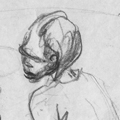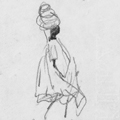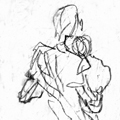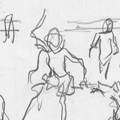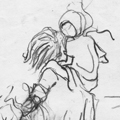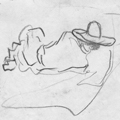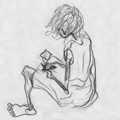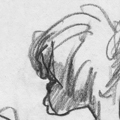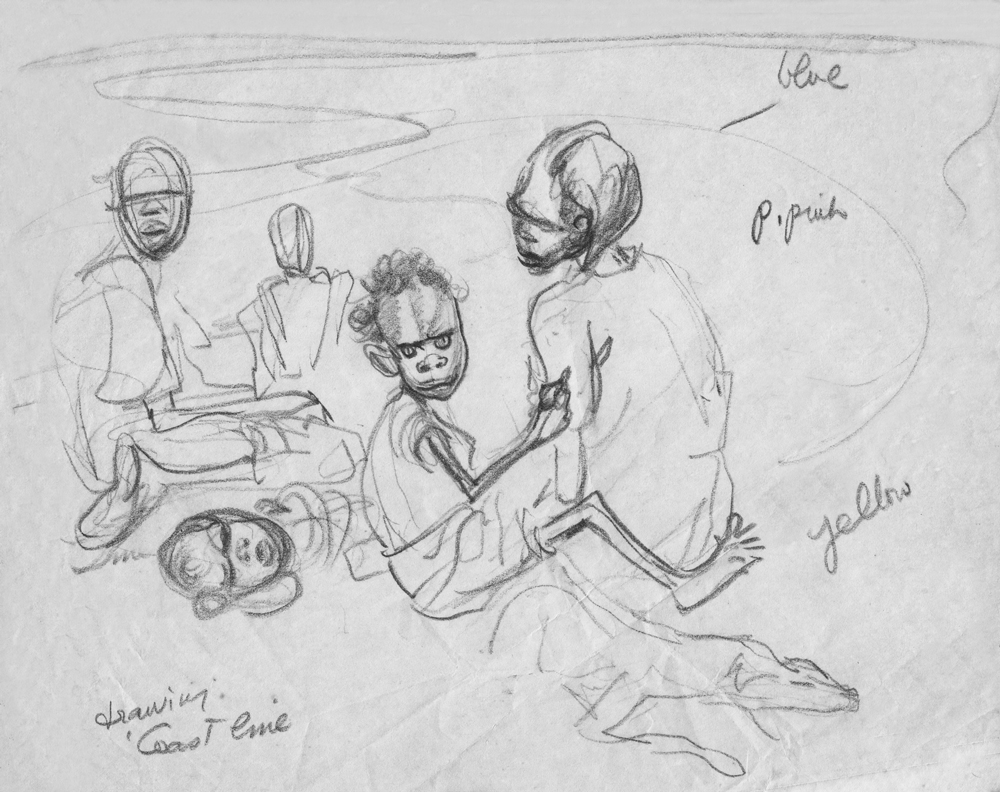I was lucky
having known
the people
it was easy to mingle in with their life. Wed walk together and
go on long journeys, sometimes two or three weeks at a time
When Id be out
in the bush the actual conditions were fairly rigorous there was no chance of
acting like the French artists whod fix themselves up in a spot, put up an
umbrella and paint right there on the spot.
It was necessary to reduce
things to a very practical easy-to-carry formula it was a case of working
with sketchbooks and soft pencils. In this way Id draw as I was going along,
walking along, actually drawing figures and shapes with a swift running line
and sometimes Id make colour notes on the side in that way I worked a good
deal in watercolour
with a big brush and flowing lines, everything in
movement. Wind and movement have always intrigued me
I generally make a united
composition from a whole flow of sketches because of course if you are working
on a moving figure a whole page might only have two or three lines on it before
positions change.
I find it very stimulating
using the moving form because there is never a lazy line in the drawing. It is
extraordinary how, no matter how crude a sketch made on the actual spot may be,
it definitely always has a life of its own. You can redraw it better and have
quite a nice result from it, but not recapture the original stimulation of the
exact contact between eye, hand and pencil on the page. It is the original
scribble that has the vitality that is so enduring
Extracts from an interview
with Hazel de Berg recorded at the Australian National Library, Canberra, May
1965
